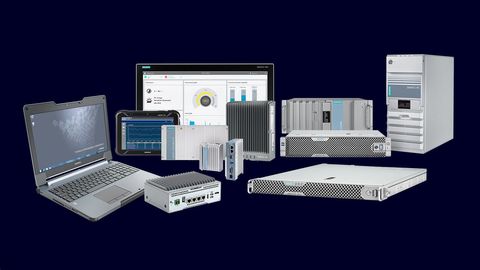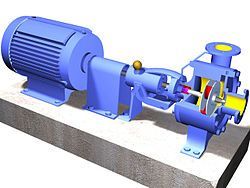Understanding Industrial Reflectors: Technical Details, and Useful Information
Industrial reflectors are engineered optical components designed to control, direct, and enhance light in manufacturing, warehousing, logistics, energy production, safety systems, and large-scale infrastructure projects. They are typically made from materials such as aluminum, stainless steel, poly carbonate, and high-grade reflective coatings that optimize how light is distributed across a space.
Their purpose is straightforward: improve illumination performance, reduce energy waste, increase visibility, and ensure a controlled lighting environment for high-precision tasks. Whether used in industrial lighting fixtures, machine rooms, production lines, or outdoor installations, these reflectors help deliver consistent and reliable light output.
Industrial reflectors exist because large-scale environments require stable and uniform illumination. Unlike residential or commercial lights, industrial settings involve higher ceilings, wider areas, heavy machinery, and environments with dust, chemicals, and vibrations. Reflectors help maintain optical efficiency even in challenging conditions.
Importance
Industrial reflectors play an important role in modern infrastructure and industrial development. Their importance is visible in several areas:
Enhanced visibility
-
Improve illumination levels in factories, warehouses, and outdoor yards
-
Reduce shadow formation, supporting safer working environments
-
Enable precision-based operations such as machining, assembly, and inspection
Energy optimization
-
Reflectors improve lighting efficiency by directing lumens where needed
-
Reduce unnecessary light dispersion
-
Support energy-focused design in large industrial spaces
Safety regulation alignment
-
Consistent lighting helps industries comply with workplace safety standards and occupational guidelines
-
Improved illumination lowers the risk of accidents, misalignment errors, and handling issues
Wide applicability across sectors
Industrial reflectors affect:
-
Manufacturing units
-
Mining areas
-
Transportation hubs
-
Storage facilities
-
Power plants
-
Chemical and pharmaceutical units
-
Food processing environments
They help solve problems such as insufficient lighting, poor energy efficiency, heat buildup, and long-term performance instability. In environments where lighting precision is essential, reflectors contribute to operational stability and reduced energy consumption.
Recent Updates
Industrial reflector technology has seen noticeable advancements over the past year, especially due to developments in material science, sustainability models, and optical engineering.
Key updates and trends (2024–2025):
-
High-reflectivity coatings (2024):
New nano-coating technologies have increased reflectivity percentages for industrial optics, improving light output without increasing power consumption. -
LED integration improvements (2024–2025):
Reflector geometry is now being optimized specifically for LED lighting, resulting in more uniform distribution and reduced glare in production and warehouse environments. -
Heat-resistant reflector materials (2024):
Manufacturers introduced improved aluminum alloys and thermal-stable polymers that can handle continuous exposure to heat from high-output LED fixtures. -
Sustainability-focused designs (late 2024):
Reflectors are increasingly being designed using recyclable metals and long-lasting coatings to align with global environmental standards. -
Smart lighting compatibility (2025):
Some reflectors are now being built into systems that work with automated lighting controls, enabling optimized beam distribution based on occupancy or task requirements.
Laws or Policies
Industrial reflectors are influenced by various national and international standards related to lighting quality, workplace safety, and environmental responsibility. These regulations ensure that lighting systems meet performance and safety criteria.
Relevant regulatory areas include:
-
Occupational safety standards
Workplace illumination requirements are outlined by national safety authorities and dictate minimum lux levels in industrial settings. Reflectors help facilities meet these standards by enhancing light distribution. -
Energy efficiency guidelines
Energy regulations encourage industries to adopt lighting systems that optimize output and reduce electrical consumption. Reflector efficiency plays a major role in meeting these guidelines. -
Environmental and material regulations
Coating materials, metals, and reflective compounds must comply with environmental safety rules that restrict hazardous materials and enforce sustainability measures. -
Industry-specific lighting rules
Sectors such as pharmaceuticals, food processing, mining, and heavy engineering require precise lighting that reduces glare and maintains visual clarity. Reflectors support compliance by ensuring stable, uniform illumination.
Policies do not directly regulate the reflector itself but influence how lighting systems containing reflectors must perform and operate.
Tools and Resources
Several tools and resources help professionals understand, evaluate, and optimize industrial reflectors. These tools are widely used by engineers, facility managers, and designers.
Lighting simulation software
-
Dialux – Used for modeling industrial lighting layouts
-
Relux – Provides advanced lighting performance simulations
-
AGi32 – Offers accurate photometric analysis for industrial applications
Optical design tools
-
LightTools – Helps analyze reflector geometry and efficiency
-
TracePro – Supports modeling of reflective efficiency and thermal interaction
Standards and reference documents
-
International Electrotechnical Commission (IEC) lighting standards
-
Illuminating Engineering Society (IES) guidelines
-
National building code documents detailing industrial illumination requirements
Useful online resources
-
Industrial lighting calculation sheets
-
Reflector material comparison charts
-
Interactive lux calculators
-
Optical coefficient reference datasets
Example comparison table for reflector materials
| Reflector Material | Reflectivity Level | Durability | Typical Use Cases |
|---|---|---|---|
| Polished Aluminum | High | Long-lasting | Warehouses, high-bay lighting |
| Stainless Steel | Medium | Very strong | Outdoor and corrosive environments |
| Polycarbonate | Moderate | Lightweight | Controlled indoor environments |
| Anodized Aluminum | Very high | Stable | Precision manufacturing areas |
These tools and resources support accurate lighting planning and help ensure compliance with required illumination standards.
FAQs
1. What materials are commonly used to make industrial reflectors?
Industrial reflectors are typically made from polished aluminum, anodized aluminum, stainless steel, or engineered plastics with reflective coatings. The material choice depends on durability requirements, temperature exposure, and environmental conditions.
2. How do industrial reflectors improve lighting efficiency?
Reflectors redirect and concentrate light to specific areas, reducing wasted illumination. This increases the effective light output without requiring higher electrical power, helping industrial spaces maintain consistent brightness.
3. Where are industrial reflectors used most often?
They are used in factories, warehouses, mining zones, power generation facilities, transportation hubs, manufacturing floors, and outdoor yards requiring wide-angle illumination.
4. Do industrial reflectors require maintenance?
Yes. Regular cleaning helps maintain reflectivity, especially in dusty or chemical-exposed environments. Inspecting coatings for wear ensures long-term performance.
5. What factors determine the right type of reflector?
Important considerations include ceiling height, environmental conditions, heat exposure, required beam spread, luminaire type, and optical efficiency needs.
Conclusion
Industrial reflectors remain essential elements in modern lighting design for large-scale environments. They support reliable illumination, enhance safety, reduce light loss, and complement high-performance lighting technologies such as advanced LEDs and smart lighting systems. With recent improvements in material engineering and reflector design, industries benefit from more efficient distribution of light, better energy optimization, and improved environmental durability.







